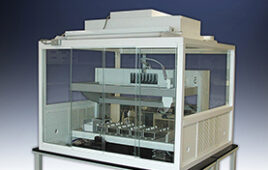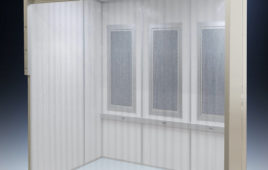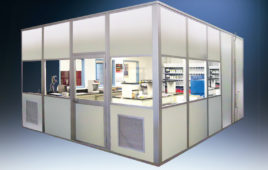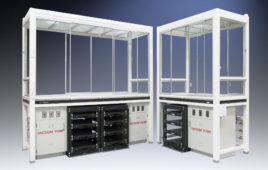The medical world has long understood the importance of minimizing microbes and other bio-based contaminants. Because implantable biomedical devices have become smaller, more widely-used, and are expected to function reliably for many years, all sources of contamination must be minimized.
Absolute cleanliness is probably an unknowable and unachievable goal. However, the maximum acceptable level of residual contamination, along with analysis and documentation of appropriate surface characteristics, is more readily determined. To this end, biomedical device manufacturers, along with regulators and other experts in the field, have established a team, the ASTM F04.15.17 Cleanliness Testing Task Force, to develop testing standards for biomedical devices. These standards will assist in establishing how clean is “clean enough,” or how clean is acceptably clean. The group has defined the project to include newly-manufactured implantable, non-resorbed medical devices made of metal, ceramics, plastics, or composites. Ultimately the task force is expected to establish multiple testing standards dealing with the cleanliness of biomedical devices.
The task force has generated a list of possible categories of residues (Table 1). Some members indicated the desirability of establishing acceptable limits of the residues. Those involved in such critical manufacturing activities as wafer fabrication, optics, aerospace, and even automotive applications will find many of the contaminants hauntingly familiar because, although biomedical devices have particularly stringent performance and reliability requirements, these contaminants occur throughout the manufacturing world.

The list of categories could grow; for example, thin-film organic residue of cleaning agents might be suggested as an addition. Further, desirable surface additives may need to be distinguished from contamination (see Kanegsberg and Chawla, “Beneficial Contamination,” A2C2, January and February, 2002.)
In addition, because the manufacture of biomedical devices often involves multiple materials and multiple fabrication processes, contamination stemming from operations that occur during initial fabrication or metalworking operations that occur outside of the cleanroom, or even at sub-vendor or supplier facilities, may warrant consideration.
Beyond the value for biomedical device manufacturers, the task force may produce standards of potential utility to a host of manufacturing applications. The task force is considering details of sampling, extraction, and analysis techniques, including specific determinations to complement the more commonly-used gravimetric approaches. There are issues of testing variability, so the group may work with NIST to prepare reference specimens of known contamination for round-robin studies, as well as for process validation and calibration.
The next activity is a one-day workshop focusing on issues of cleanliness for newly manufactured biomedical devices, scheduled for May 7, 2003 at the Westin Crown Center, Kansas City, MO. The workshop will include presentations by invited experts in the field of cleaning and cleanliness standards, as well as those involved in producing or monitoring medical devices. To facilitate information exchange, the workshop will involve both presentations and roundtable discussions. On the following day, the Cleanliness Testing Task Force will work on standards outlining sample preparation techniques, methods of analysis, and ultimately on acceptable residue levels. In a highly competition-sensitive and heavily regulated world, this laudable collaborative effort is worthy of support.




